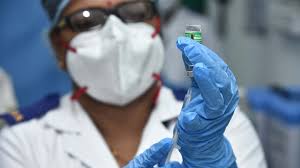In the ongoing quest to optimize prostate cancer screening, a recent study presented at the European Association of Urology (EAU) Congress in Paris has suggested that a simple blood test checking for prostate-specific antigen (PSA) every five years could be safe and sufficient, particularly for low-risk individuals.
The study, conducted by researchers from Heinrich-Heine University in Dusseldorf, Germany, challenges the conventional screening practices by proposing longer intervals between screenings, aiming to minimize unnecessary invasive procedures while ensuring timely detection of the disease.
Prostate cancer screening has long been a subject of debate due to concerns regarding false positives leading to unnecessary treatments and false negatives resulting in missed diagnoses. However, advancements in medical imaging, such as MRI scans, have paved the way for more targeted and precise screening approaches.
“The landscape of prostate cancer screening is gradually evolving, thanks to innovations like MRI scans which can help avoid unnecessary biopsies, and the adoption of ‘active surveillance’ protocols,” explained the researchers.
Their study, which split men aged 45 into different risk groups based on PSA levels, found that for low-risk individuals with a PSA level of under 1.5 nanograms per milliliter (ng/ml), a screening interval of five years appeared sufficient. Those with PSA levels between 1.5-3 ng/ml were categorized as intermediate risk and were recommended a follow-up every two years, while men with PSA levels over 3 ng/ml were considered high risk and underwent further evaluation, including MRI scans and biopsies.
Among over 20,000 men enrolled in the trial and identified as low risk, 12,517 underwent a second PSA test at age 50. Remarkably, only 1.2 percent of these men exhibited elevated PSA levels necessitating further investigation, and subsequent biopsy revealed cancer in just 0.13 percent of the total cohort.
Lead researcher Professor Peter Albers from the Department of Urology at the University emphasized the significance of raising the threshold for defining low-risk individuals, enabling longer intervals between screenings for a substantial portion of the cohort.
“Our ongoing study may even suggest that extending the screening interval to seven, eight, or ten years is feasible without compromising detection rates,” Professor Albers stated, hinting at the potential for further refinement in prostate cancer screening protocols.
As cases of prostate cancer are projected to escalate globally, the findings of this study offer promising insights into more efficient and personalized approaches to screening, aiming to strike a balance between early detection and minimizing unnecessary interventions.












